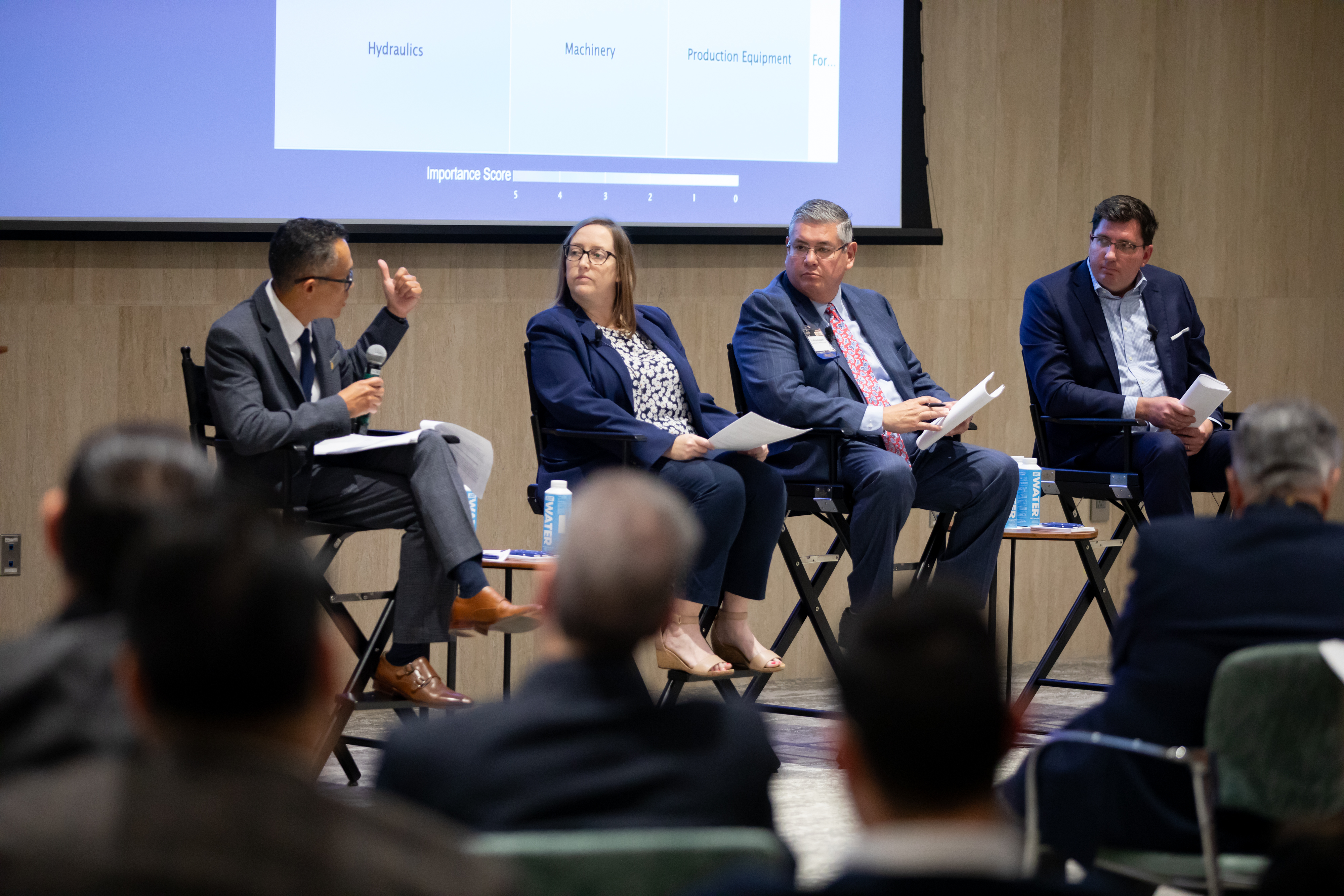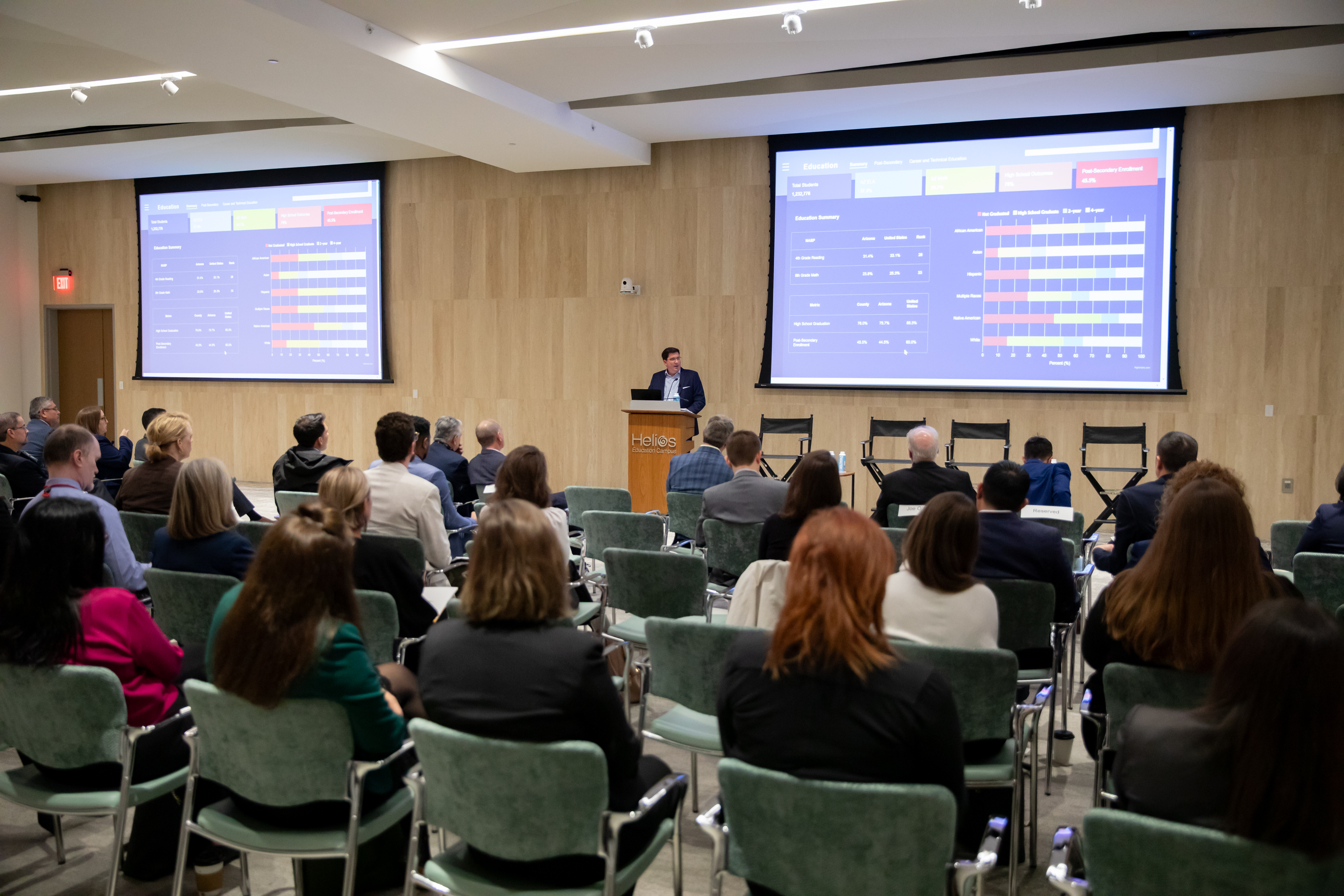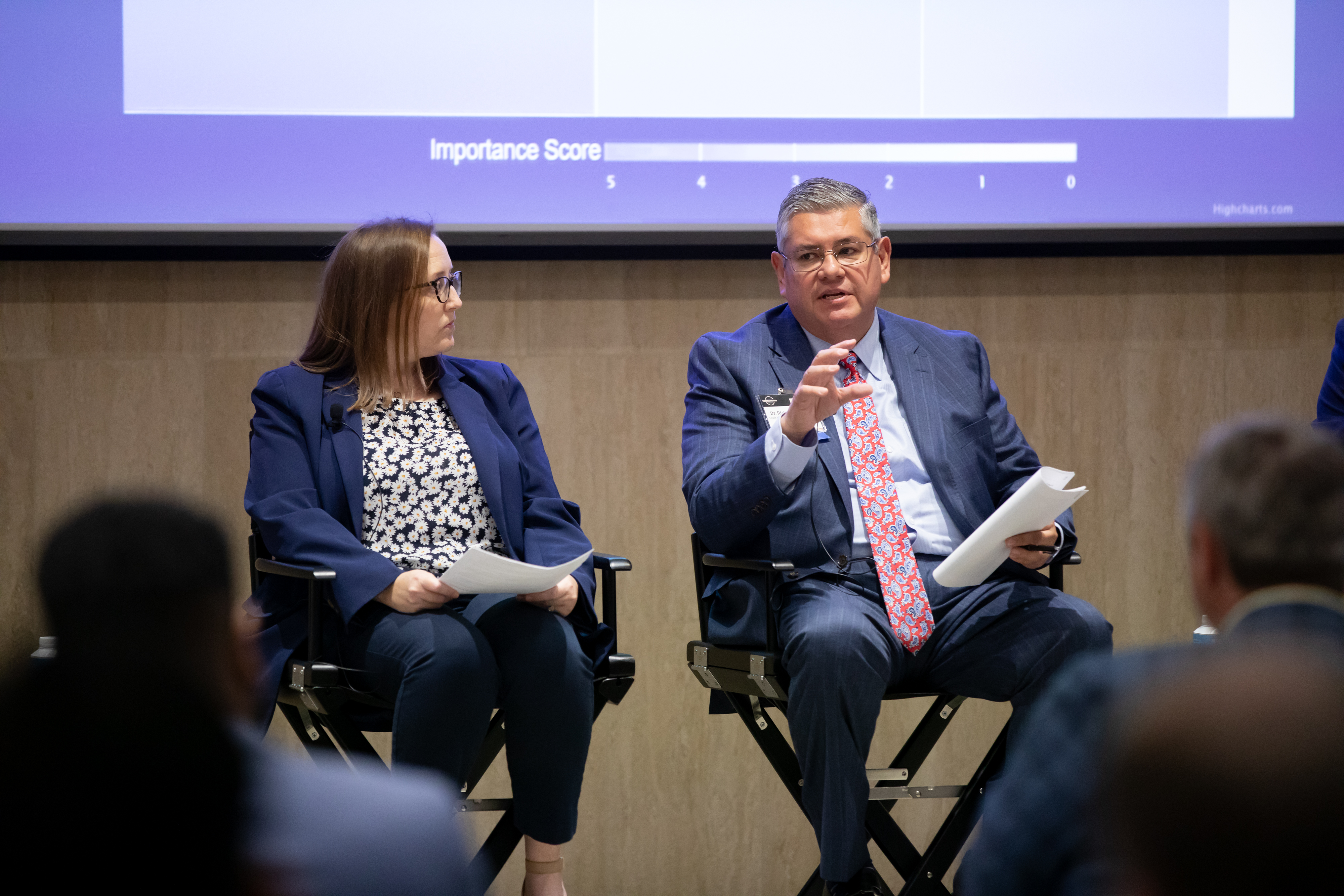Event recap: Arizona Education and Workforce Visualization is unveiled
ASU Helios Decision Center’s new data visualization allows users to explore interaction between Arizona's economic and educational systems
There’s an incredible opportunity in Arizona to cultivate homegrown, generational talent to ensure the state is prepared to meet future workforce needs and continue its strong economic growth.
That’s one of the key findings from the Arizona Education and Workforce Visualization. It’s a multi-screen, interconnected data visualization created by the ASU Helios Decision Center for Educational Excellence, which is a partnership between Helios Education Foundation and Arizona State University.
Displayed on seven theater-style screens in the Helios Decision Theater, this visualization allows for deep exploration of job quality, jobs at risk of automation, supply and demand flows in career sectors, and educational pathways to high-skill, high-wage, high-demand jobs. It also identifies opportunities for economic mobility that are equitable and accessible to all.

The Arizona Education and Workforce Visualization was publicly unveiled March 7 on the Helios Education Campus in partnership with the Phoenix Business Journal and the ASU Helios Decision Center. The event drew more than 120 educators, business leaders and community partners. They learned about the visualization’s potential to leverage targeted educational programs and workforce development.
“The visualization paints a vivid picture of Arizona's promising economic future,” Helios President and CEO Paul J. Luna told the audience. “Yet, it also reveals a pressing need—we must add 500,000 college degrees, certificates, or licenses by the year 2030 to meet the expected labor demand for highly-skilled workers in high-growth, high-wage jobs. This underscores the urgency of having all of us working better together to ensure our students and workers are prepared for the cutting-edge opportunities that our economy is creating.”
Key takeaways from the Arizona Education and Workforce Visualization:
Growth and opportunity: Arizona's economy is rapidly expanding across various industries, creating thousands of high-quality jobs and attracting skilled workers from across the country and around the world. This diverse growth strengthens the state’s economy and offers great potential for workers to thrive, provided they have the necessary skills and opportunities.
Focus on equity: Despite the overall economic growth, there are disparities based on region, race, ethnicity, and gender. Most high-paying jobs are concentrated in urban areas, leading to racial and gender gaps in access to these opportunities. The visualization emphasizes these equity issues across different industries and occupations.
Pathways to better jobs: For workers in lower-paying or high-risk-of-automation jobs, the visualization identifies pathways to advance to better-paying positions. These pathways focus on building upon existing skills to transition to occupations with higher pay and lower automation risk.
The future for Arizona's students: Many of the high-quality jobs in Arizona require advanced skills and education. However, the state faces challenges with low high school graduation and college attendance rates, limiting opportunities for students. Arizona’s strong economy presents an opportunity to invest in the growth and achievement of Arizona’s students so that they’re not shut out from the high-quality jobs Arizona’s economy is generating.

Luke Tate, Managing Director of the Office of Applied Innovation at ASU, led a presentation of the Arizona Education and Workforce Visualization at the event. He noted Arizona is 10 percentage points behind the nation in high school graduation rates and 15 percentage points behind the nation in college enrollment rates at a time when the state is well positioned to continue to grow.
The visualization shows that by 2030, the state’s fastest-growing industries in high-skill and high-wage occupations are projected to be in health care (48,616 new jobs), professional and scientific jobs (42,226), finance (33,166), construction (20,736) and manufacturing (11,013).
“Our kids should be the ones taking advantage of this incredibly vibrant economy,” Tate emphasized. “We have left them behind. That cannot happen anymore. The top priority in this incredibly successful economy that we’ve built is that our kids should thrive in it.”

Event attendees also heard from South Mountain Community College President Dr. Richard Daniel on his plans to use the visualization to guide his college’s degree and program offerings.
Erin Hart, Director of the Office of Strategic Initiatives and Policy Advisor on Higher Education and Early Education for the Office of Governor Katie Hobbs, shared that she sees the visualization as a valuable tool to help ensure more Arizonans are prepared for the state's thriving economy.
Dr. Daniel and Hart were both part of a panel discussion moderated by Vince Yanez, Senior Vice President of Community Engagement and Strategic Partnerships at Helios Education Foundation.
Explore the visualization
The Arizona Education and Workforce Visualization is available for use at the Helios Decision Theater. Visit the ASU Helios Decision Center website or email decisioncenter@asu.edu to request a presentation with a data expert. They can walk you through the visualization, pull data of interest to you and then set you up to receive access to the tool from your own desktop to dive even deeper.
Learn more:
- Video event recap
- Infographic: Arizona Education and Workforce Visualization
- Read Dr. Michael Crow and Paul J. Luna's op-ed
- New ASU-Helios data tool spotlights key educational and workforce pathways for community colleges
- New data visualization highlights Arizona’s urgent need to increase postsecondary education attainment (page 21)
- New data visualization identifies pathways to upskill for workers in jobs with high risk for automation (pages 16)

